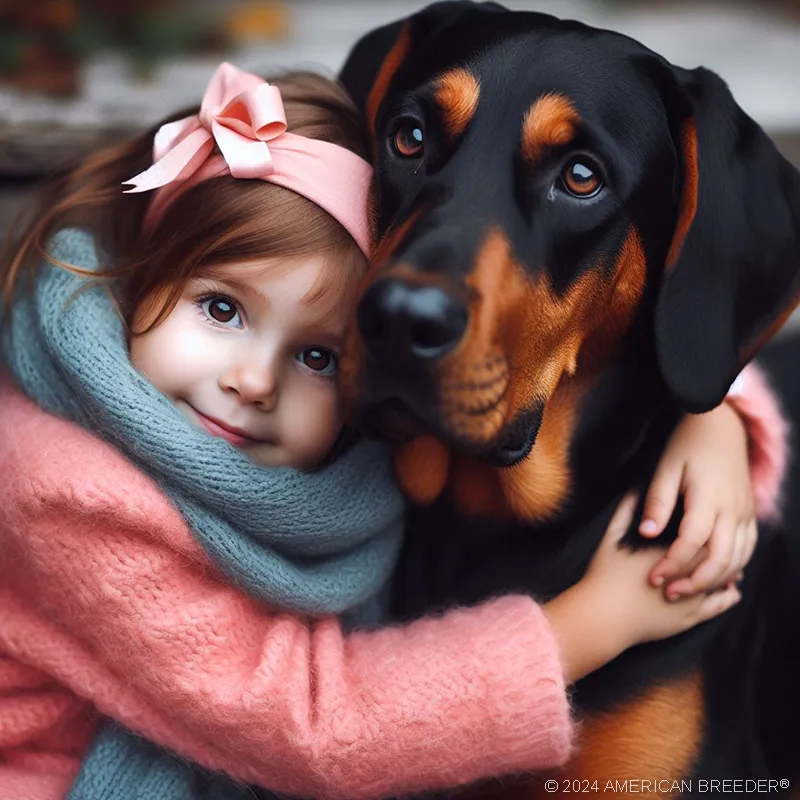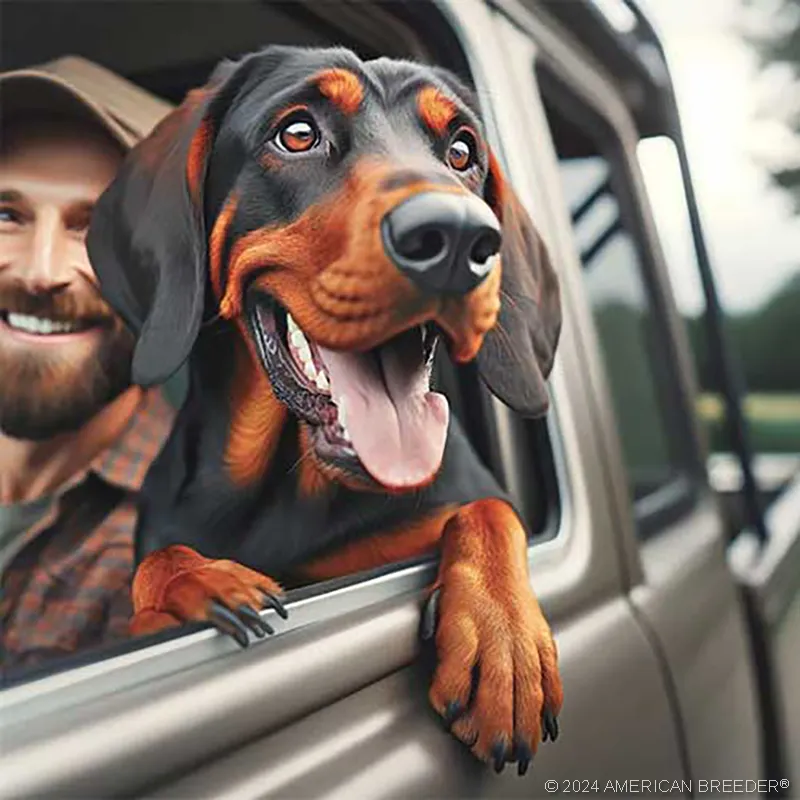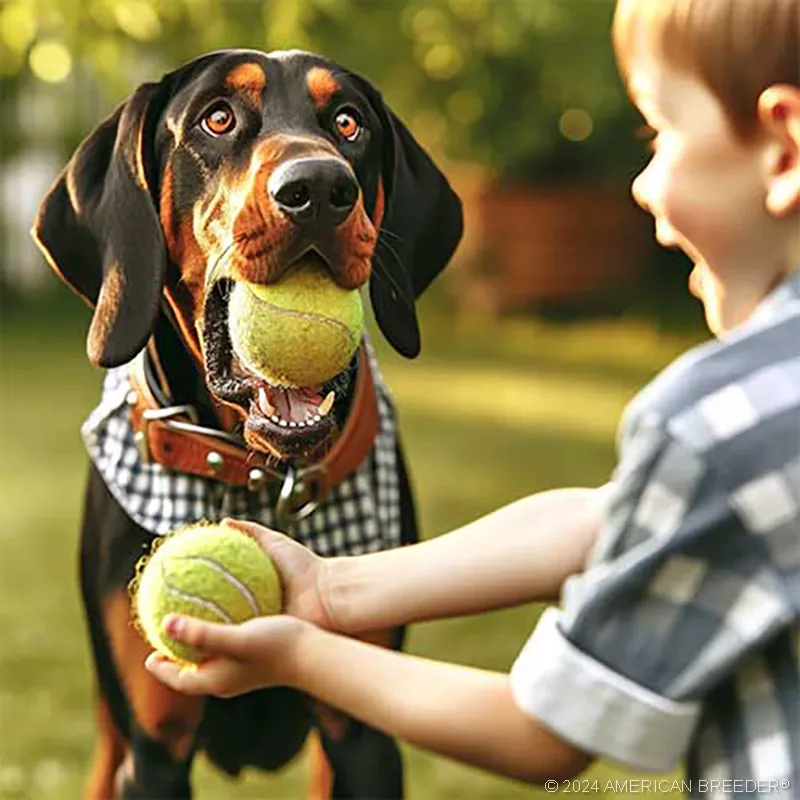Welcome to the World of Transylvanian Hound's
Welcome to the Comprehensive Guide to Transylvanian Hounds, your ultimate resource for everything you need to know about this remarkable breed. Whether you're considering bringing one into your home or are simply curious about these dogs, this guide will provide you with a thorough understanding of Transylvanian Hounds.
Introduction to the Transylvanian Hound
 History and Origins
History and Origins
The Transylvanian Hound, also known as the Erdélyi Kopó in Hungarian, is a breed with a fascinating history deeply rooted in the Transylvania region of Romania. It's believed to have descended from ancient hounds brought to the Carpathian Mountains by Hungarian kings and nobles as far back as the 9th century. These dogs were carefully bred over centuries for their hunting prowess, and the result is the Transylvanian Hound we know today.
Transylvanian Hounds have a rich history as skilled hunters. They were used primarily for tracking game, including large animals like bears and boars. Their exceptional scenting abilities and stamina made them invaluable hunting companions.
Physical Characteristics
Transylvanian Hounds are medium-sized dogs with a sturdy and well-proportioned build. They have a distinctive tricolor coat, with a black saddle, tan cheeks and eyebrows, and white markings on the muzzle, chest, paws, and tail tip. Their ears are medium in length, set moderately high, and hang close to the head. This ear shape helps them avoid entanglement in thick underbrush during hunts. One of the defining characteristics of the Transylvanian Hound is its long, elegant tail that tapers to a point. This tail is carried high, and its white tip serves as a distinguishing feature.
Temperament and Behavior
 Understanding Temperament and Behavior
Understanding Temperament and Behavior
These transylvanian hound dogs have a unique personality shaped by their history as hunters and their role as loyal companions. Transylvanian hounds are known for their intelligence and independence. They are quick learners and often display problem-solving abilities, which can be both impressive and challenging for owners. While they are affectionate and loyal to their families, they also have a strong prey drive due to their hunting background. Early socialization is crucial to help them get along with other pets and animals.
Their protective instincts make them excellent watchdogs. They will alert their owners to any unusual activity or strangers, making them valuable additions to home security. Transylvanian Hounds are typically good with children and make loving family pets. However, their high energy levels mean they require plenty of exercise and mental stimulation to prevent boredom-related behaviors. Their friendly and sociable nature also extends to other dogs. Properly socialized Transylvanian Hounds can enjoy the company of other canines, making them great for multi-dog households.
Training and Exercise Needs
Training and Exercise are Vital
These dogs have high energy levels and thrive on both physical and mental challenges. Early training is essential to ensure these dogs grow into well-behaved and obedient adults. Positive reinforcement methods work well with them, as they respond positively to praise and rewards. Their tracking instincts can be harnessed in activities like nose work and scent tracking, providing both mental stimulation and a chance to utilize their natural talents. Regular exercise is a must for Transylvanian Hounds. Daily walks, runs, or playtime in a secure, fenced yard are essential to keep them happy and healthy. Engaging in canine sports such as agility, obedience, or rally can be an excellent way to channel their energy and build a strong bond between owner and dog. Remember that mental exercise is just as important as physical exercise for this breed. Puzzle toys and interactive games can help prevent boredom and destructive behaviors.
Grooming and Care
 Transylvanian Hounds are relatively low-maintenance when it comes to grooming, thanks to their short, smooth coat. However, there are still essential care requirements to keep them in top condition.
Transylvanian Hounds are relatively low-maintenance when it comes to grooming, thanks to their short, smooth coat. However, there are still essential care requirements to keep them in top condition.
Regular brushing with a soft bristle brush will help keep their coat healthy and reduce shedding. This breed is considered a moderate shedder, so a weekly brushing session is usually sufficient. Their ears should be checked regularly for signs of infection, and teeth brushing should be part of their dental care routine to maintain oral health. Like all dogs, Transylvanian Hounds require routine veterinary care, including vaccinations, parasite control, and annual check-ups to ensure they remain in good health. Proper nutrition is crucial, and owners should provide a balanced diet that meets their specific nutritional needs based on age, activity level, and any health concerns.
Health and Wellness
Transylvanian Hounds are generally healthy dogs with a lifespan of around 10 to 12 years. However, like all breeds, they can be prone to certain health issues.
Common Health Issues
While this breed is relatively robust, some conditions have been observed more frequently in Transylvanian Hounds. These include hip dysplasia, ear infections (due to their floppy ears), and obesity. Regular exercise, a balanced diet, and routine vet visits can help mitigate the risk of these issues. Responsible breeders perform health screenings and genetic testing to reduce the likelihood of passing on hereditary conditions to puppies.
 Nutrition and Diet
Nutrition and Diet
Proper nutrition plays a significant role in the health and longevity of Transylvanian Hounds. High-quality dog food, whether commercially manufactured or homemade with a veterinarian's guidance, is essential. Portion control is crucial to prevent overeating and obesity, a common concern in this breed. Owners should consult with their vet to determine the best diet plan for their specific dog, taking into account age, activity level, and any allergies or sensitivities.
Exercise and Mental Stimulation
Transylvanian Hounds are an active breed that requires regular exercise to stay healthy and happy. Daily walks, runs, or playtime in a secure yard are essential. Mental stimulation is equally important, as these dogs are intelligent and enjoy problem-solving. Puzzle toys, scent work, and obedience training sessions are great ways to engage their minds.
Socialization and Compatibility
Transylvanian Hounds are known for their friendly and sociable nature. They typically get along well with children, making them great family pets. However, early socialization is crucial to ensure they are comfortable around other animals, as their hunting instincts may trigger a strong prey drive.
Interaction with Children
Transylvanian Hounds are often patient and gentle with children. They can form strong bonds with young family members and are protective of them. Supervision is essential when young children are around dogs, but this breed is generally a good choice for families.
Compatibility with Other Pets
Proper socialization is vital when introducing a Transylvanian Hound to other pets, especially smaller animals like cats or rabbits. Early exposure and positive interactions can help them coexist peacefully. However, individual temperament varies, so it's crucial to monitor their behavior and intervene if any issues arise.
 Multi-Dog Households
Multi-Dog Households
Transylvanian Hounds tend to be sociable with other dogs, especially if they are introduced at a young age. They enjoy the companionship of fellow canines and can thrive in multi-dog households.
Living Arrangements and Environment
Creating the right living environment for a Transylvanian Hound is essential to their well-being and happiness. These dogs can adapt to various living situations but thrive in specific conditions.
Suitable Living Arrangements
Transylvanian Hounds can adapt to apartment living if they receive enough exercise and mental stimulation. However, they truly shine in homes with access to a securely fenced yard where they can burn off energy.
Climate Considerations
This breed is well-suited to various climates, but their short coat makes them sensitive to extreme cold. In cold weather, it's essential to provide them with adequate shelter and protection to prevent discomfort.
Yard Size and Ideal Conditions
An ideal yard for a Transylvanian Hound should be large enough to accommodate their active nature. Secure fencing is a must, as their hunting instincts might lead them to follow interesting scents. Providing them with shelter, shade, and fresh water is essential for their outdoor comfort.
Training and Obedience
Transylvanian Hounds are intelligent dogs that respond well to training when done with positive reinforcement techniques.
 Basic Obedience
Basic Obedience
Basic obedience training is essential for every Transylvanian Hound. Teaching commands like sit, stay, come, and heel can help keep them safe and well-behaved in various situations.
Advanced Training
This breed excels in more advanced training activities like agility, tracking, and obedience trials. Engaging in these activities not only keeps them physically active but also mentally stimulated.
Behavioral Challenges
Transylvanian Hounds may face certain behavioral challenges, particularly if they are not adequately exercised or stimulated. Common issues include excessive barking, digging, and separation anxiety. Consistent training and providing outlets for their energy can help address these challenges.
Traveling and Outings
If you're a Transylvanian Hound owner, you'll likely want to bring your furry friend along on adventures. Proper planning and preparation are key to ensuring safe and enjoyable outings.
Traveling with Your Dog
Before embarking on a journey with your Transylvanian Hound, ensure that they are comfortable with car rides. Gradual exposure and positive reinforcement can help reduce anxiety during travel.
 Pet-Friendly Destinations
Pet-Friendly Destinations
Research pet-friendly accommodations and destinations that welcome dogs. Many national parks, hiking trails, and beaches allow dogs on leashes. Familiarize yourself with the rules and regulations of your chosen destination to ensure a smooth experience.
Safety Measures
Always prioritize your dog's safety during outings. Keep them on a leash unless you're in a designated off-leash area, and carry essentials like water, a first-aid kit, and waste disposal bags. Be mindful of weather conditions and your dog's comfort.
Responsible Ownership and Ethical Considerations
Owning a Transylvanian Hound comes with responsibilities beyond daily care and training.
Adoption Options
Consider adopting a Transylvanian Hound from a rescue organization or shelter. Many wonderful dogs are in need of loving homes, and adoption is a compassionate choice. If you decide to purchase from a breeder, research thoroughly to ensure they are reputable and prioritize the health and well-being of their dogs.
 Ethical Breeding Practices
Ethical Breeding Practices
Responsible breeders prioritize the health and temperament of the breed over profit. They conduct health screenings, genetic testing, and maintain clean and safe facilities for their dogs. Ensure that your chosen breeder follows these practices and provides proper documentation.
Commitment to Lifelong Care
Owning a Transylvanian Hound is a long-term commitment. Ensure you have the time, resources, and willingness to provide for your dog throughout their life. Regular vet visits, grooming, and proper nutrition are essential aspects of responsible ownership.
Community Engagement
Engage with the Transylvanian Hound community, whether through breed-specific clubs or online forums. Networking with other owners can provide valuable insights, support, and a sense of belonging.
Conclusion
In conclusion, the Transylvanian Hound is a remarkable breed with a rich history and versatile capabilities. Their loyal and friendly nature makes them excellent family pets, while their hunting instincts and intelligence offer exciting opportunities for various dog sports and activities. Understanding their unique needs, from exercise to socialization, is key to ensuring a happy and healthy life for your Transylvanian Hound.
Transylvanian Hound Dog Quick Reference Guide
 Breed Background: Origin: Carpathian Mountains | Breed Purpose: Hunting large game | AKC Class: Hound Group | Year Recognized by AKC: Not recognized by AKC
Breed Background: Origin: Carpathian Mountains | Breed Purpose: Hunting large game | AKC Class: Hound Group | Year Recognized by AKC: Not recognized by AKC
Appearance: Size: Medium-sized | Weight: Males 55-77 lbs (25-35 kg), Females slightly smaller | Coat Type: Short, dense, sleek | Colors & Patterns: Black with tan markings, small white chest patch | Distinctive Features: Pendulous ears, strong build
Temperament: Energy Level: High | Loyalty: High | Friendliness to Pets: Good | Friendliness to Strangers: Moderate | Trainability: Moderate | Playfulness: High | Frequent Barker: Moderate | Chase Instincts: Strong | Sense of Smell: Exceptional | Drive to Hunt: Strong
Health & Care: Health Issues: Hip dysplasia, ear infections | Lifespan: 10-14 years | Grooming Difficulty: Low | Exercise Needs: High
Socialization: Interaction with Children: Good | Interaction with Pets: Good | Interaction with Strangers: Cautious | Elderly Compatibility: Moderate | Ease of Training: Moderate
Suitable Living Arrangements: Apartment: Not ideal | House: Preferred | Rural Area: Ideal | Yard Size Requirements: Medium to large yard
Training & Obedience: Trainability: Moderate (3/5) | Intelligence: High (4/5) | Obedience: Moderate (3/5) | Problem-Solving: Moderate (3/5) | Easily Stimulated: Moderate (3/5) | Focus Level: Moderate (3/5) | Easily Distracted: Moderate (3/5)
Financial Planning: Typical Price Range: $800 - $1,200 | Initial Expenses: Puppy vaccinations, spaying/neutering | Ongoing Annual Expenses: Food, grooming, vet visits
Breeding: Reproductive Maturity: 6-9 months | Litter Frequency: Once a year | Litter Size: 5-8 puppies | Stud Cost: Varies, usually moderate | Breeding Challenges: Responsible breeding, maintaining genetic diversity
Did You Enjoy this Article? Share it and Help Us Spread the Word!
If you found this article helpful, we'd appreciate it if you could share it with your friends or link to it from your website, blog, or group! You can also use the convenient social share tabs on the left side of the screen to instantly share this page to your social media feed. For more ways to support and promote the American Breeder Community, visit our Share & Promote Together page for social media posts and memes you can copy and share. Your support means the world to us!
Disclaimer: The information provided in this article is for general informational purposes only and does not constitute legal, medical, financial, or professional advice. While we strive for accuracy, we make no representations or warranties regarding the completeness, accuracy, reliability, or suitability of the information. Please consult with a professional before making decisions based on the content provided. American Breeder Inc. assumes no responsibility for any errors or omissions or for the results obtained from the use of this information.
